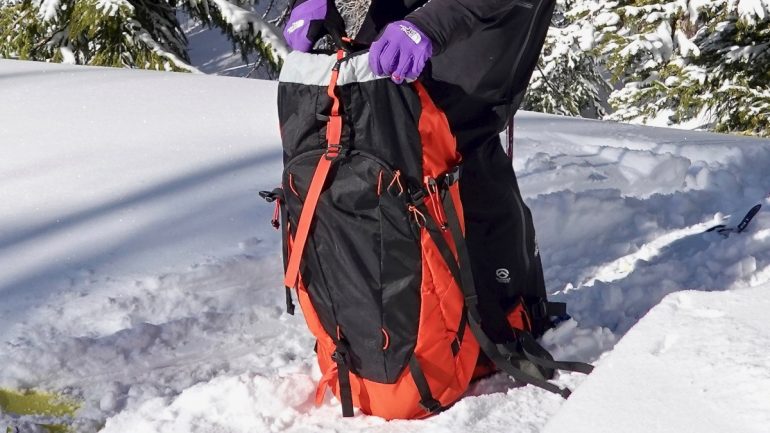
Top loading Forecaster 35 configured for casual winter powder skiing, aka no lid, no external tools.
Athlete tested and developed gear is a long standing tradition in the outdoor sporting goods world. Makes sense right? Professional athletes excel at their craft, push the gear to its limits, and have the experience to offer feedback. Not to mention the multitude of media content created during testing- before the product even hits the streets. The North Face has hung their hat on this model for awhile, ie my recent look at the new 50/50 down technology, and this reputation seems to successfully trickle down to folks buying their streetwear lines.
Sometimes there are users who operate and depend on their gear even more than athletes. Case in point, The North Face Forecaster 35 pack. Yep, that’s forecaster as in avalanche information center forecasters, the pro snow scientists keeping us in the know throughout the season. How often do you remove and repack your avalanche gear? These folks are using every function of a backcountry skiing pack daily for work. Who better than to test and develop a backcountry ski pack with?
The Friends of the Colorado Avalanche Information Center (the independent fundraising non-profit for the CAIC) worked with TNF to get CAIC forecasters into the development process of the Forecaster 35 backpack. The forecasters were able to use the pack in the field pre-production, and provide direct feedback to The North Face development team.
I’ve carried the Forecaster 35 roughly 15 days thus far this season. It is quite similar to my favorite spring/mountaineering pack, the Black Diamond Cirque 45, so I’ll offer an A/B comparison of the two on design first.
The Forecaster 35 is a top loader with a removable lid featuring one external pocket and one internal. The lid is included in the 35L designation. The zippers have nice large pulls and are easy to operate with gloves on. The main closure is a drawstring cinch, covered by a small flap and then secured to two optional points with a hook on a single piece of webbing. The webbing also doubles as a rope carry or diagonal ski carry when needed, nearly identical to the Cirque. The optional lid on the BD pack is a joke, incredibly fragile and floppy, more of a pouch than lid. However, the closure flap on the Cirque is larger and offers better coverage, I find myself fiddling with centering the Forecaster flap a bit too much.
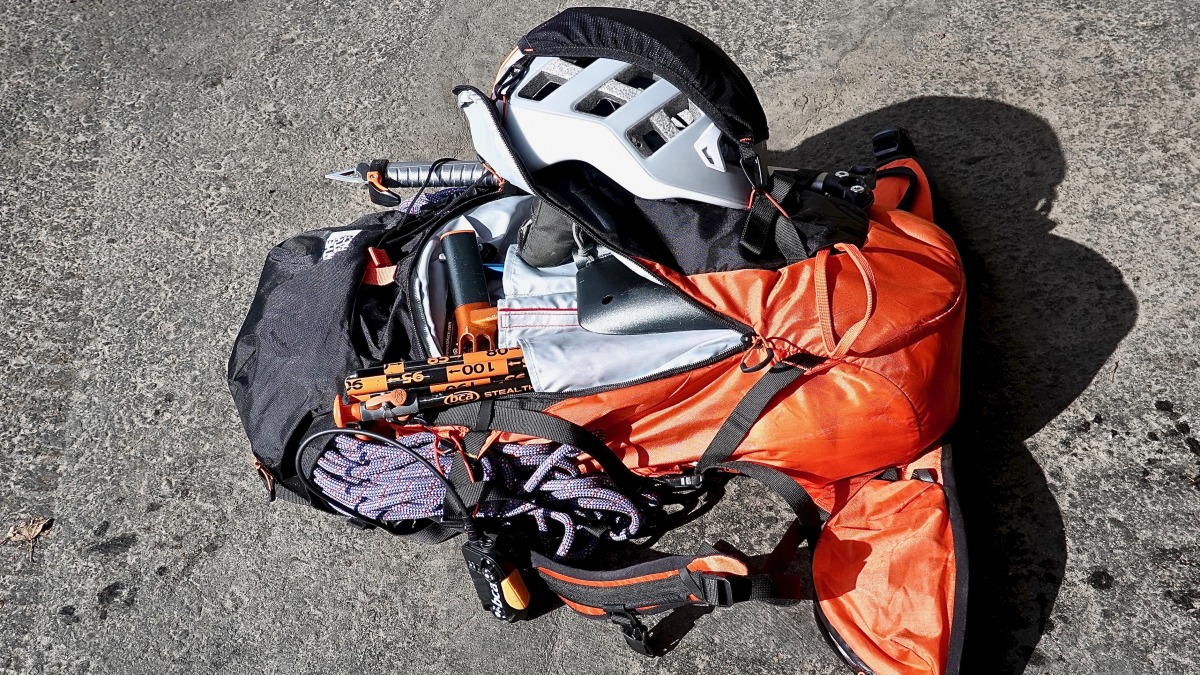
Loaded with rope, helmet carry in play, radio routed to shoulder strap and ice tool on the right, the avy tools are just as accessible. Swap the rope for A-framed skis and you still have a single zipper between you and your rescue tools.
The avalanche tool compartment on the Forecaster is external, dedicated, and super easy to access and operate- as you might expect to see from avalanche pros. Care was taken to prevent blocking access even when the pack is loaded up externally. The only standard configurations that would prevent a single zipper access to the tools, are diagonal ski carry and an axe on the wearer’s left side. This includes a helmet stowed, axe on the right, and a rope setup pictured above. Sub A-framed skis for the rope and still get quick tool access. Each tool has an individual secure position. My Black Diamond Quickdraw 320 Carbon probe and BCA RS EXT shovel and BD snow saw fit well within the compartment. The Cirque does have a dedicated compartment, secured with a single red buckle, but is inside the main compartment, requiring the user to open three separate closures to access tools. Not ideal in an emergency burial scenario.
The main compartment in both packs is open with no internal pockets, only a sleeve for hydration bladder. I don’t use a bladder, but instead use the pouch for my repair kit. My main gripe with the Forecaster is that if you remove the lid, which I have for bulk, weight and ease of entry for simple winter powder skiing, there are no zippered pockets outside of the avy tools compartment and small hip belt stash. I have been dumping other small goods in the hydration sleeve as needed.
The hip belt on the Forecaster is padded yet minimal, with the aforementioned zipper pocket and single gear loop on the opposing side. Same layout as the Cirque. The belt webbing is doubled back so that you pull inwards to tighten; I’m a fan of this style. The hip belt is height adjustable and removable, though I would imagine removal only happens when repurposing for other activities. The 204g frame-sheet is also removable along with helmet carry and top lid, as mentioned before, to save weight. These adjustments cut 342g bringing the Large/XL down to about 900grams, well under the magic 1000g number mentioned in yesterday’s pack-weight conscious guest blog by Teague Holmes, though I would imagine he would take some scissors to a few buckles and straps.
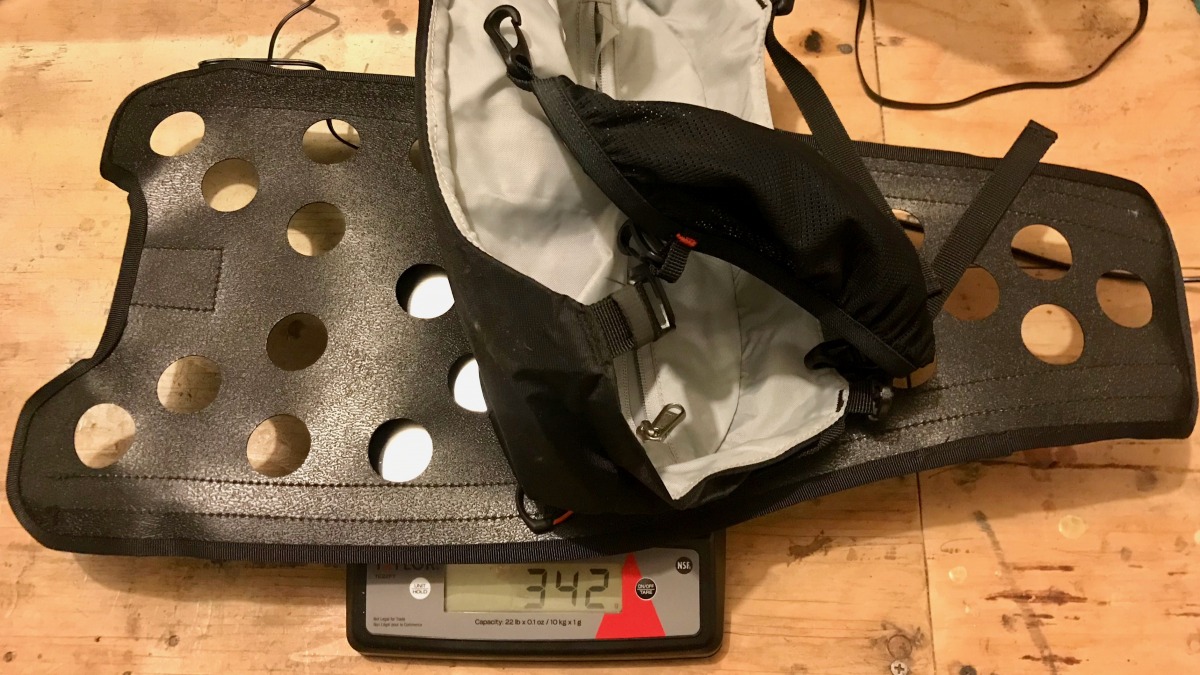
For those looking for a sub kilo pack, the Forecaster 35 can accommodate
Onward to functionality. The Forecaster 35 carries really well. The hip belt stays synched (sometimes a problem for my skinny waist) and the pack stays tight on my back with just a bit of dialing in. The slightly padded back is comfortable for long days or bigger loads. I found myself on a 10,000 vertical foot tour in early December with some crusher friends, Forecaster 35 strapped on. It was too early in my season for such a big day and I was absolutely floored, but didn’t have any rub or pack induced problems.
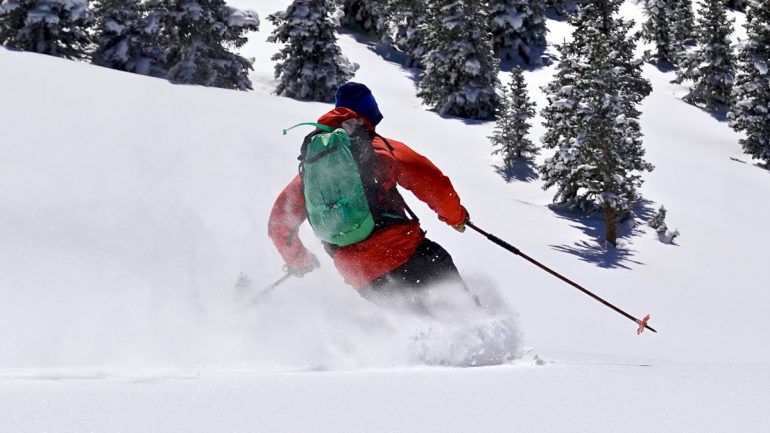
Friend and CAIC forecaster Kreston Rohrig free skiing on an off day – Forecaster 35 on board.
I haven’t had any skis-on-the-back missions so far this season, but I did strap them on to test the function. Works fine — untuck the fixed lower loop, insert skis, wrap closure webbing around skis and hook to a side loop. The skis can rest diagonally or vertically depending on which side the webbing’s hook is placed. A-frame ski carry is also possible using the side compression straps. Light skis could be side carried with the same straps. I did get to take the pack ice climbing a couple of times and test the ice tool loops. The minimalist ice tool keepers took a second to figure out, but work great. Ice pick ends stow away protected, the piolet spike can tuck neatly under the lid, though would eventually destroy it without a pick protector.
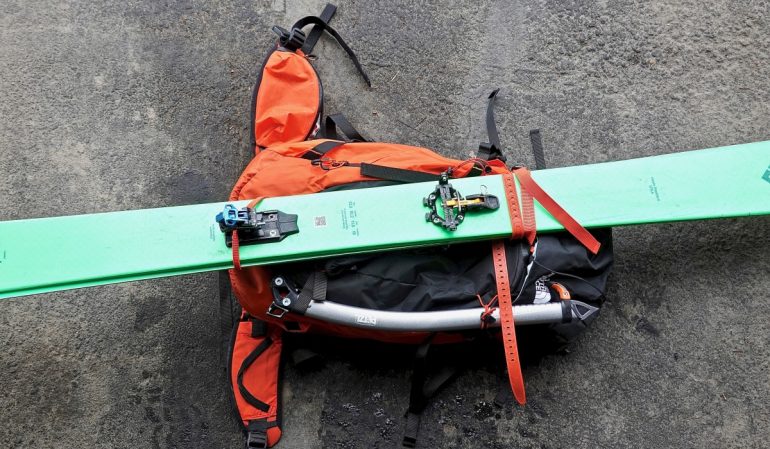
Ski carry employed vertically to accommodate an unused tool on the wearers right.
I’ve switched to using my airbag pack (BD Jetforce Tour reviewed here ) at this point in the season given the current snowpack and terrain choices. I will go back to the Forecaster 35 this spring as I think it is a promising ski mountaineering pack. Will update in the comments below if issues arise or praise is warranted. Is the Forecaster 35 anything super special? No, not really. It’s a simple yet technically sound lightweight pack. What is unique about the pack is its development and the folks who aided in that. I urge every winter backcountry user to support their local avalanche information center in whatever way possible.
SPECS
Weight: S/M: 1215 g, L/XL: 1240 g
Dimensions: S/M: 29 cm X 20 cm X 55 cm, L/XL: 29 cm X 19 cm X 58 cm
Fabric: 210D IronLite™ Nylon
Shop for it
On March 22nd 2021, Gary Smith tragically died in an avalanche outside of Beaver Creek Resort in Colorado. Since 2018, Gary has been a frequent and insightful contributor to WildSnow. From Christmas Eve spent at the Wildsnow Field HQ cabin, to testing gear and sharing his love for steep skiing around the world, he was a pillar of the ski touring community and will be greatly missed.
